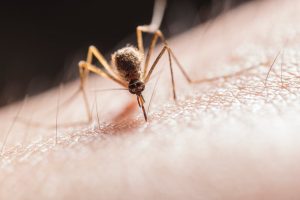 The word “pesticide” may be a general term and is described as a substance that kills a pest or prevents the damage a pest may cause. Pests are often insects, mice or other animals, unwanted plants (weeds), fungi, bacteria, or viruses. Pesticides are usually chemicals, but they will even be made up of natural materials like animals, plants, bacteria, etc. If you need professional care on getting rid of pest, visit شركة مكافحة حشرات بجدة.
The word “pesticide” may be a general term and is described as a substance that kills a pest or prevents the damage a pest may cause. Pests are often insects, mice or other animals, unwanted plants (weeds), fungi, bacteria, or viruses. Pesticides are usually chemicals, but they will even be made up of natural materials like animals, plants, bacteria, etc. If you need professional care on getting rid of pest, visit شركة مكافحة حشرات بجدة.
The term “pesticide” describes a vast and diverse group of chemicals or products. It’s vital always to get specific information about the particular product you’re using.
What are samples of pesticides?
Pesticides include a good range of products and many of which you’ll use a day. The table below lists some common categories, purposes, and products they’re typically found in.
• Insecticides – Kills or repel insects, ticks, and mites
• Fungicides – Kills mold, mildew and other fungi.
• Rodenticides – Kills rodents like mice and rats.
• Disinfectants – Kills bacteria, mold, and mildew.
• Wood preservatives – Protects wood from insects and fungi.
How do pesticides work?
Pesticides are often grouped because they share similar chemical properties in the same way. These products may have active ingredients from quite one chemical family.
Organophosphates
There are several sorts of pesticides during this family, counting on the particular chemicals used and are usually made up of orthophosphoric acid. Most organophosphates are insecticides. They control pests by working on the nervous system. With some exceptions, most are highly toxic.
Organophosphates are used because they’re less persistent (breakdown faster) in soil, food, or animal feed than other families, like organochlorine pesticides. However, many are being phased out or used only in critical applications.
Organochlorines
Controls pests by disrupting the ion flow at the axon level. Generally persistent in soil, food, and inhuman and animal bodies does not break down quickly. They can accumulate in fatty tissues. Traditionally used for insect and mite control, many are no longer used because of their ability to stay within the environment for an extended time.
Carbamates and Thiocarbamates
They are made from acid. Control pests by working on the nervous system interfere with nerve-impulse transmission by disrupting the enzyme that regulates acetylcholine. In general, they are less persistent within the environment than the organochlorine family. The hazard to humans and animals is mild with herbicides and fungicides, while more significant with insecticides.
Pesticides are prepared in liquid, solid and gaseous forms. Liquid formulations include suspensions, solutions, emulsifiable concentrates, microencapsulated suspensions, and aerosols. Solid formulations include dust, particulates, granular, pellets, soluble granules, powders, baits, and tablets. Gaseous pesticides are fumigants that can be sold as liquids or gases.